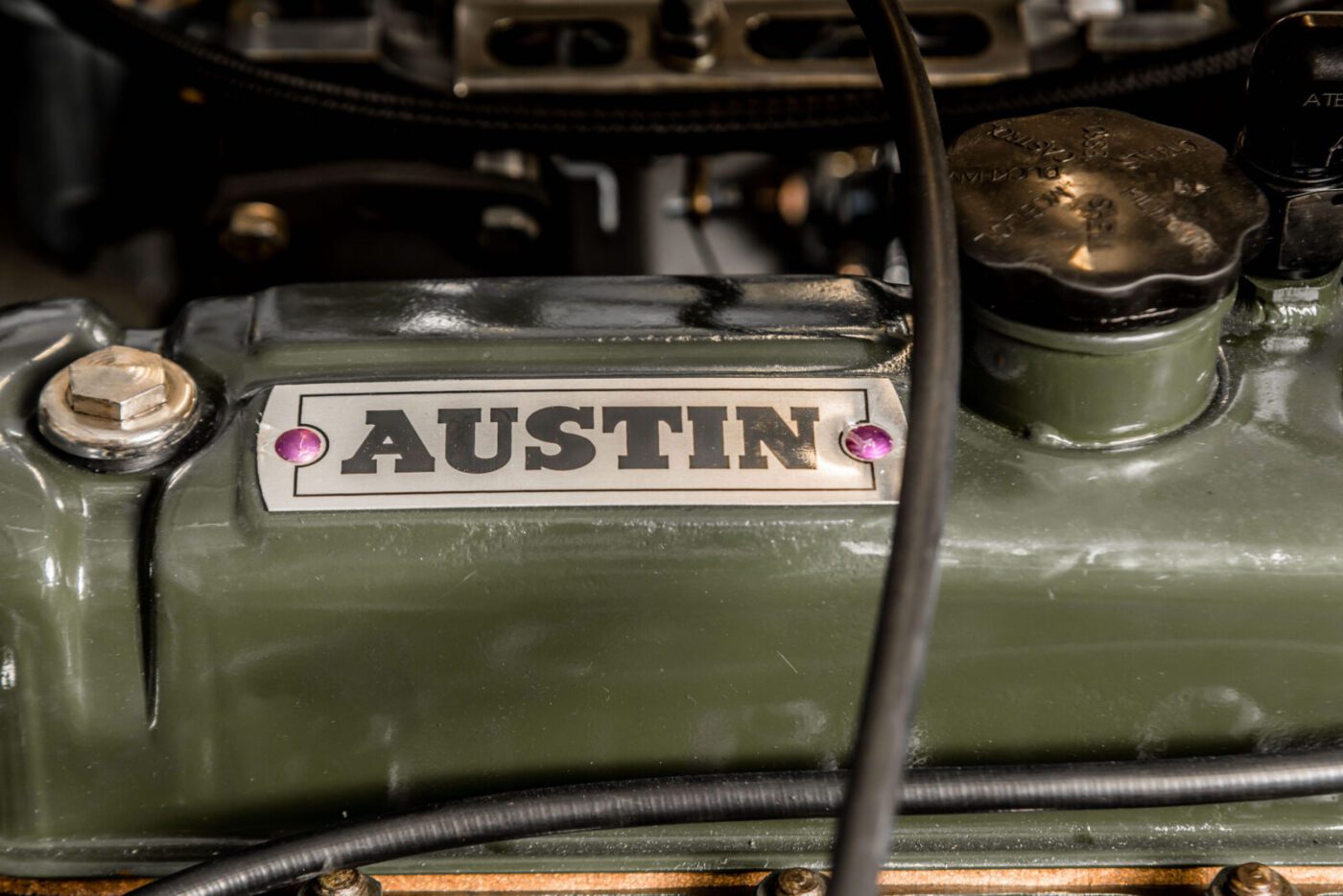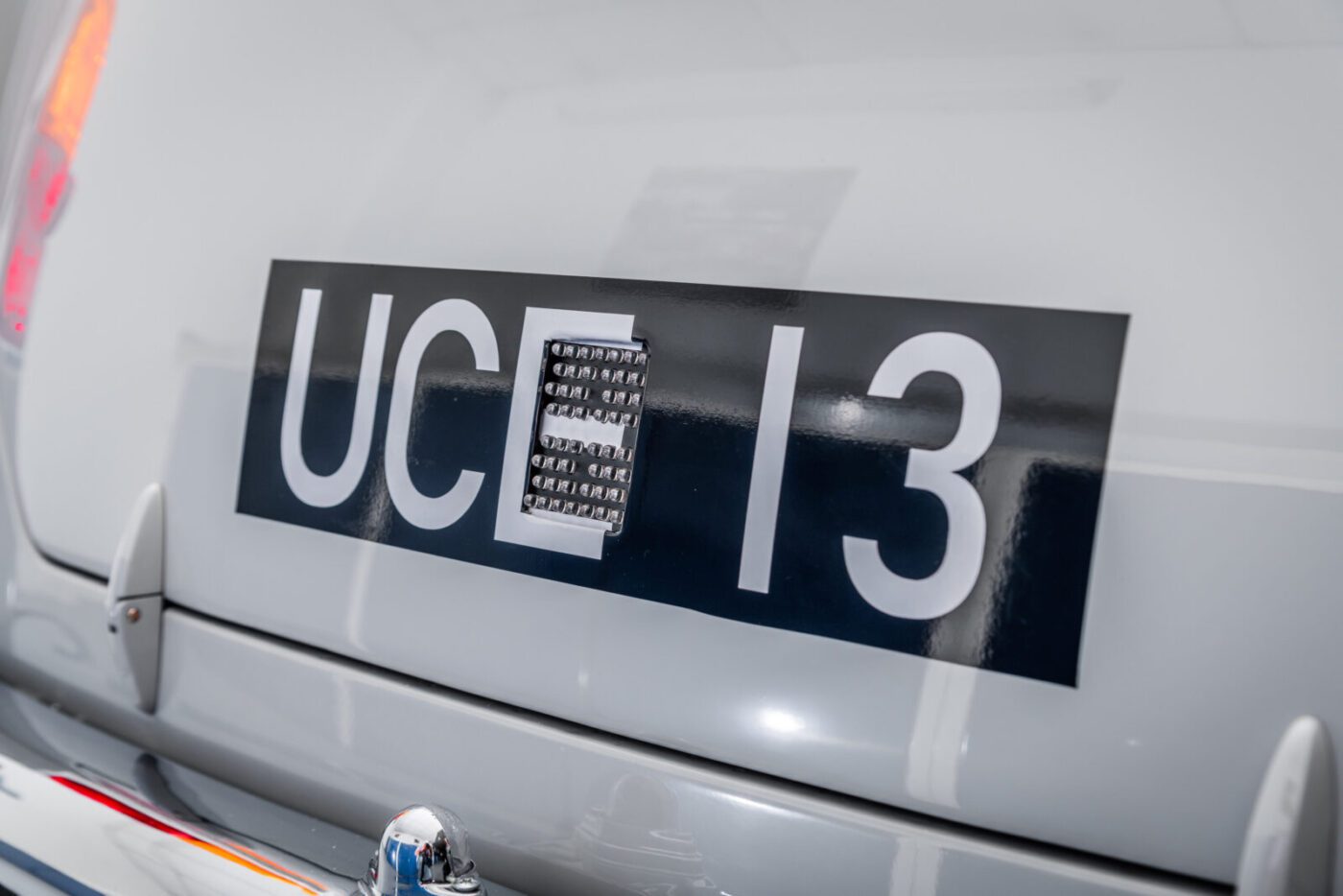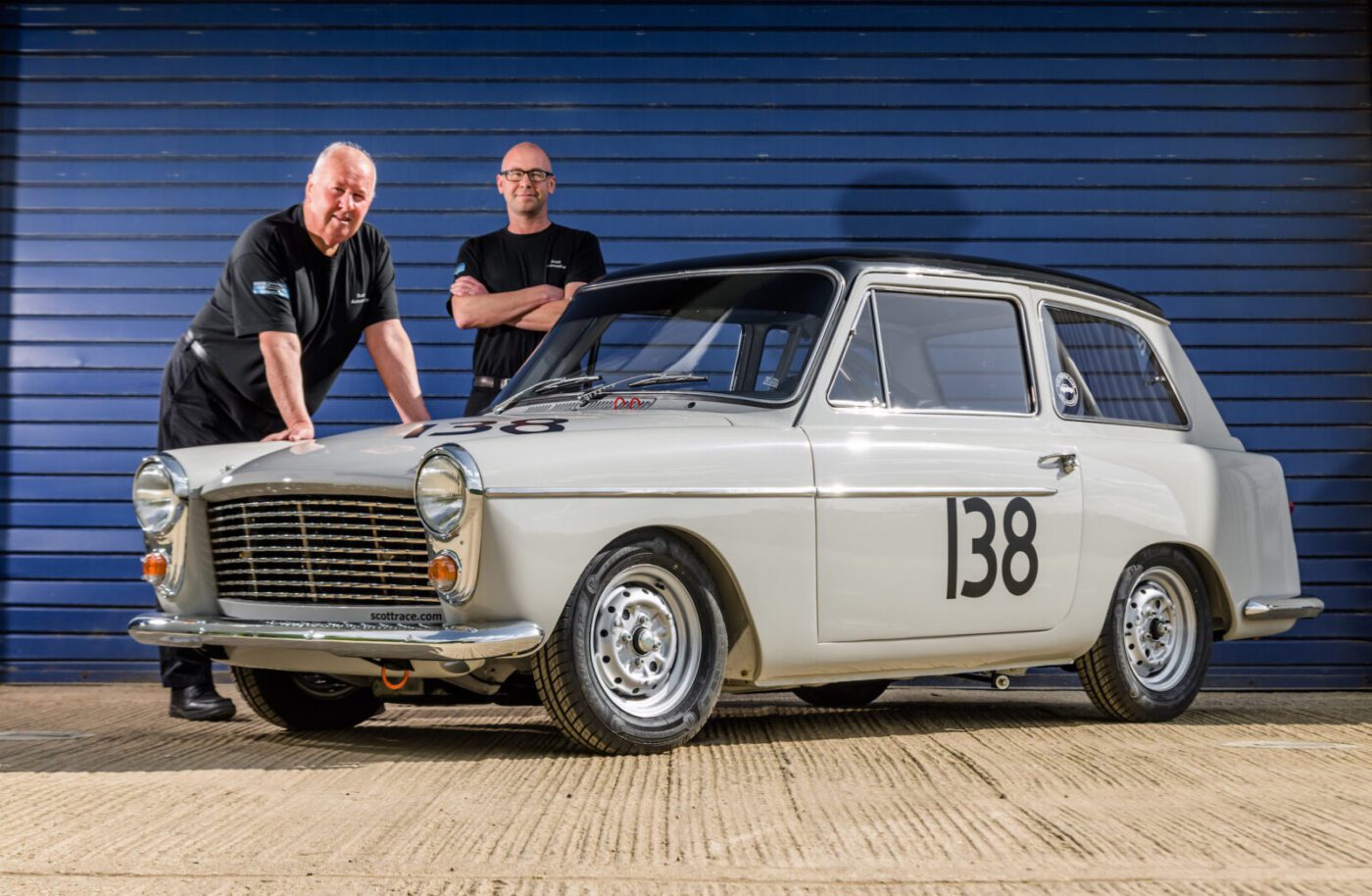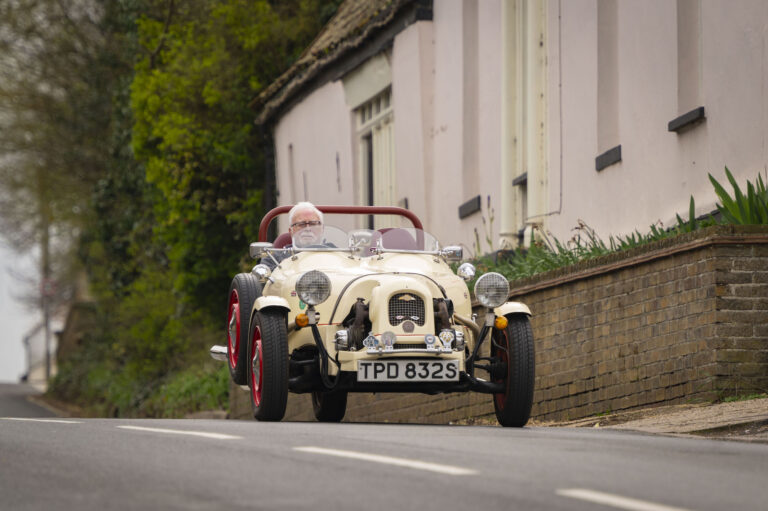It looked like a common or garden Austin A40 Farina, but the car that ducked in and out of Trevor Parfitt’s life for years was very much a wolf in sheep’s clothing.
The seemingly humble red and black A40 parked at the Cambridge garage where Trevor worked in the 1960s had a secret that would not reveal itself until he bought the car several years later.
This wasn’t just any old family runabout, but the once-grey race car owned and driven by local GP George “Doc” Shepherd to win the 1960 British Saloon Car Championship.
And now, nearly six decades since its finest hour, Trevor and the team at his race preparation and car restoration business have completed a meticulous, no-expense-spared restoration in time for the BTCC’s 60th anniversary celebrations.
In the early ‘60s Cambridge was a hotbed of motor racing and Trevor, who now runs Scott Automotive with his son Simon, was a “young whippersnapper” rubbing shoulders in the Cambridge Car Club with the likes of Shepherd, Don Moore, John Aley and Brian Lister.
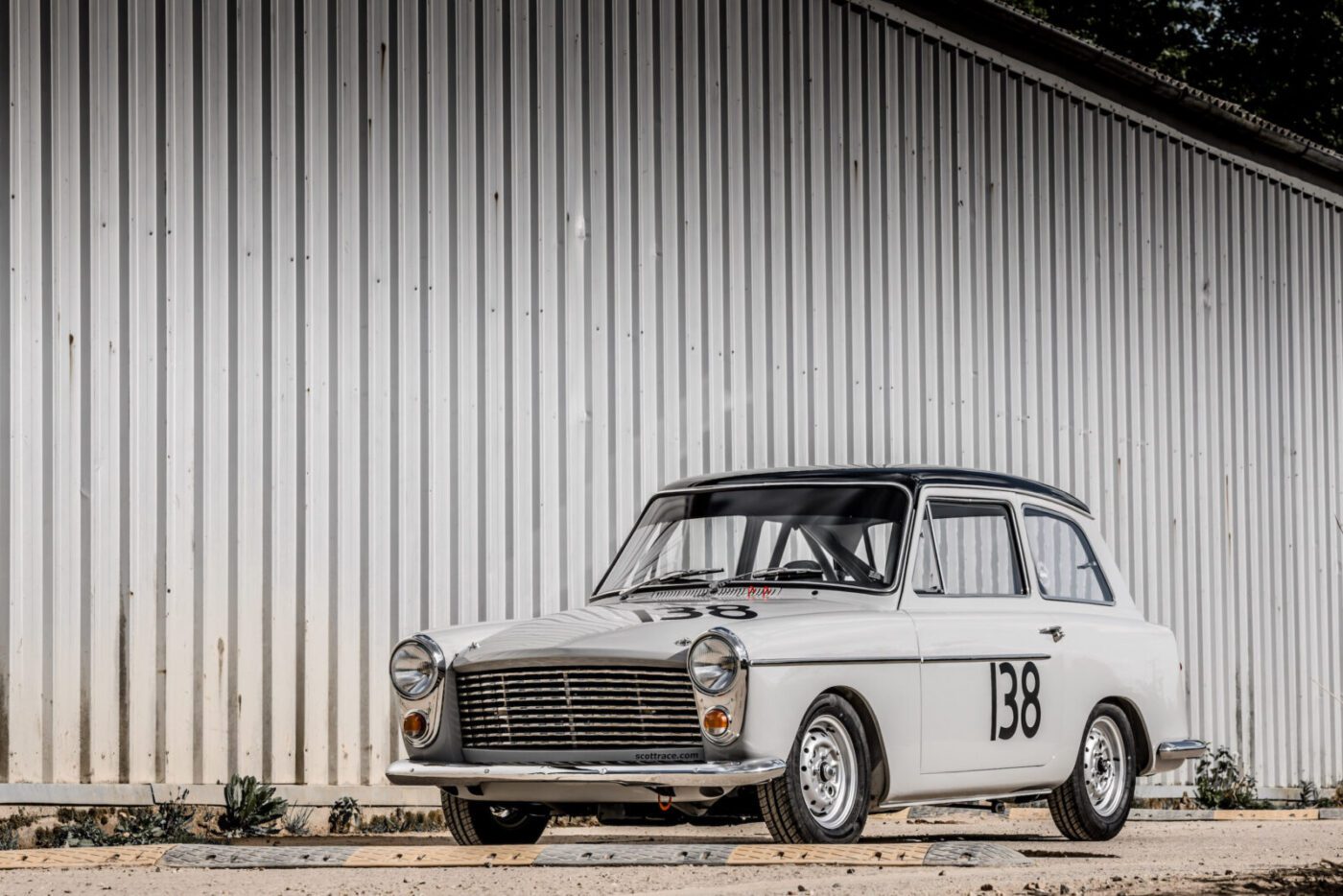
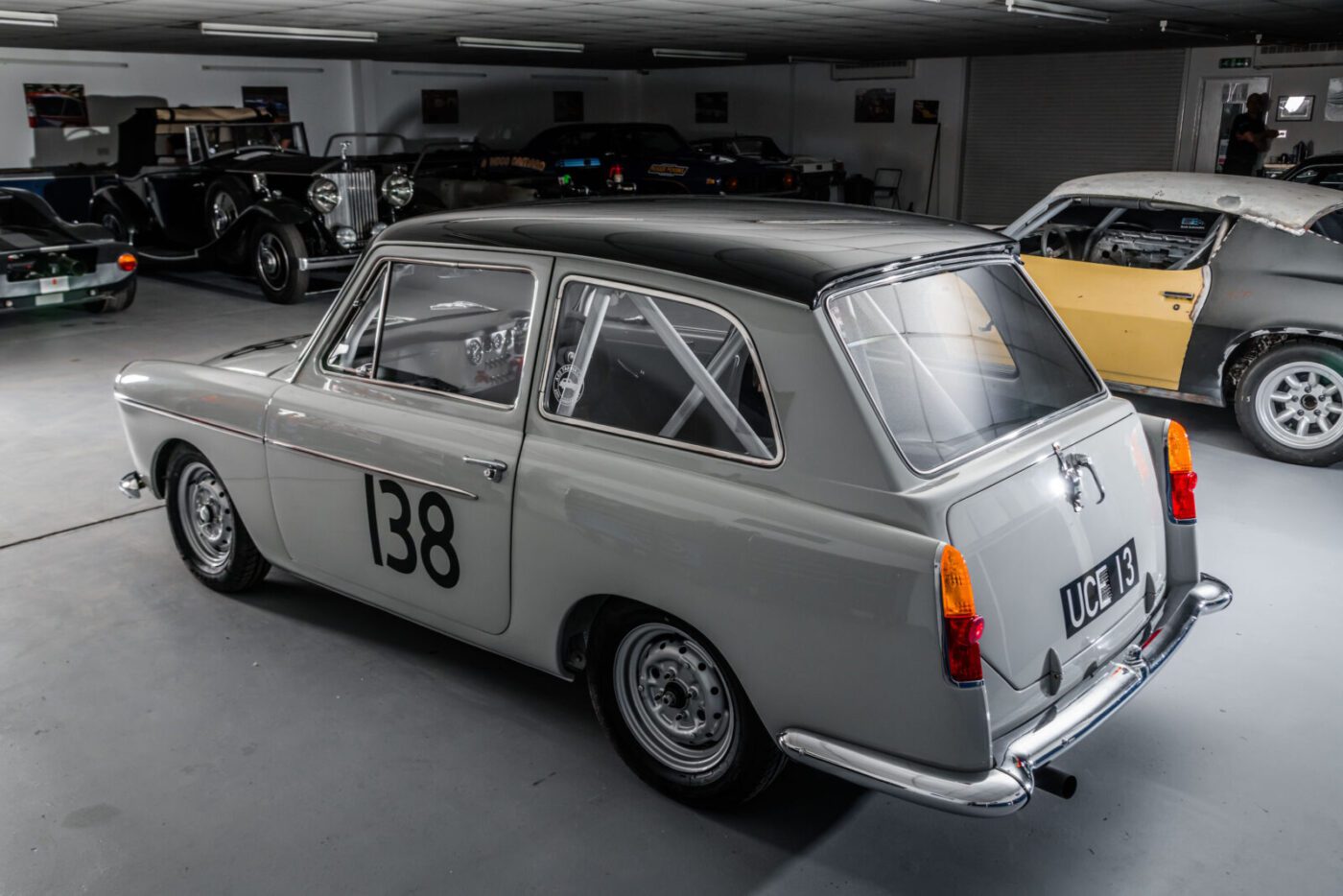
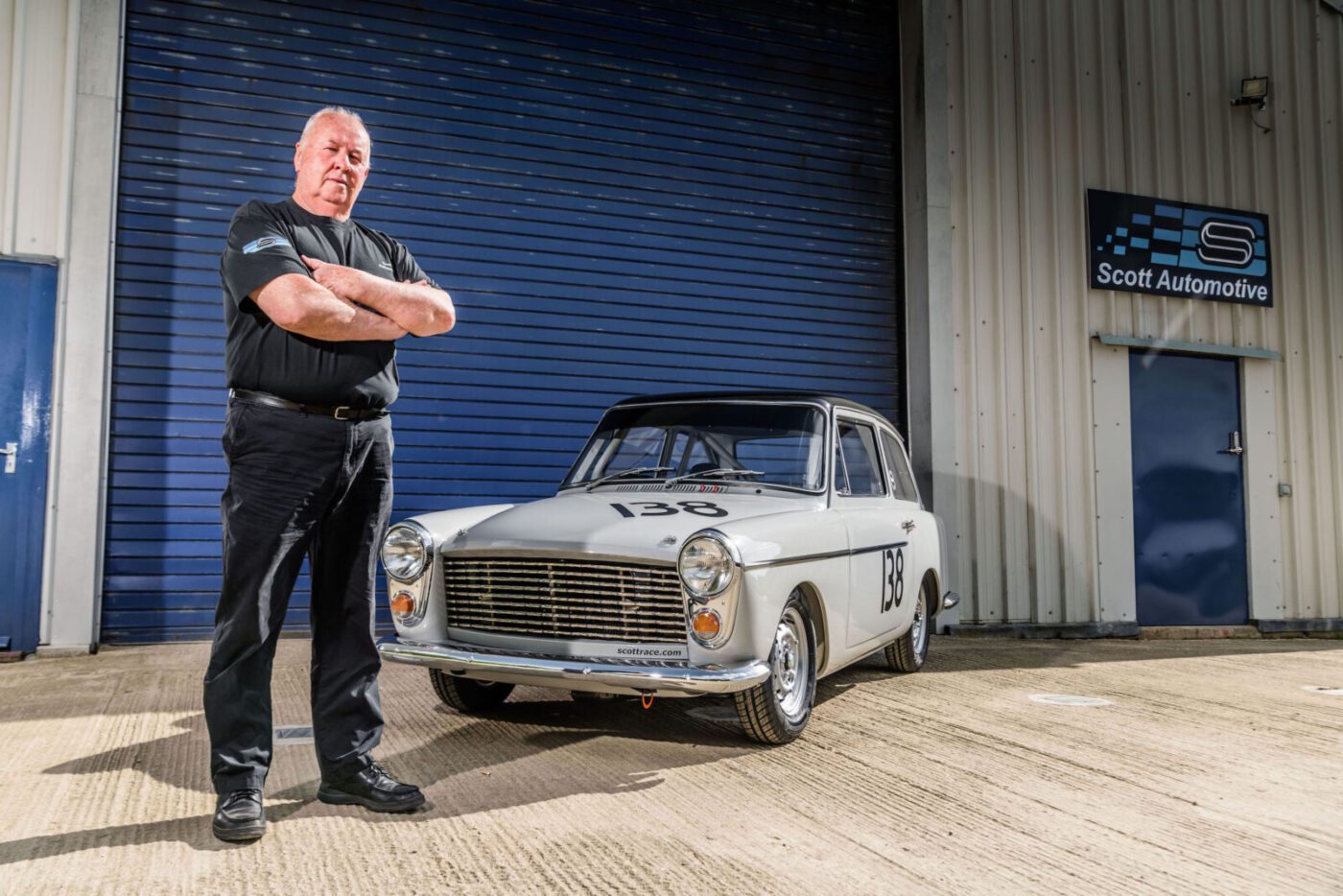
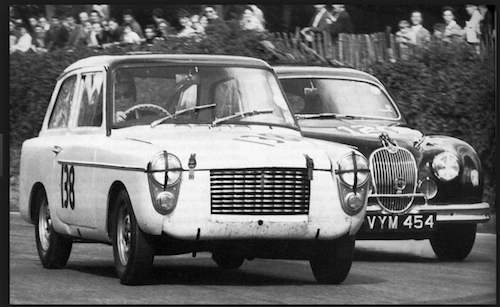
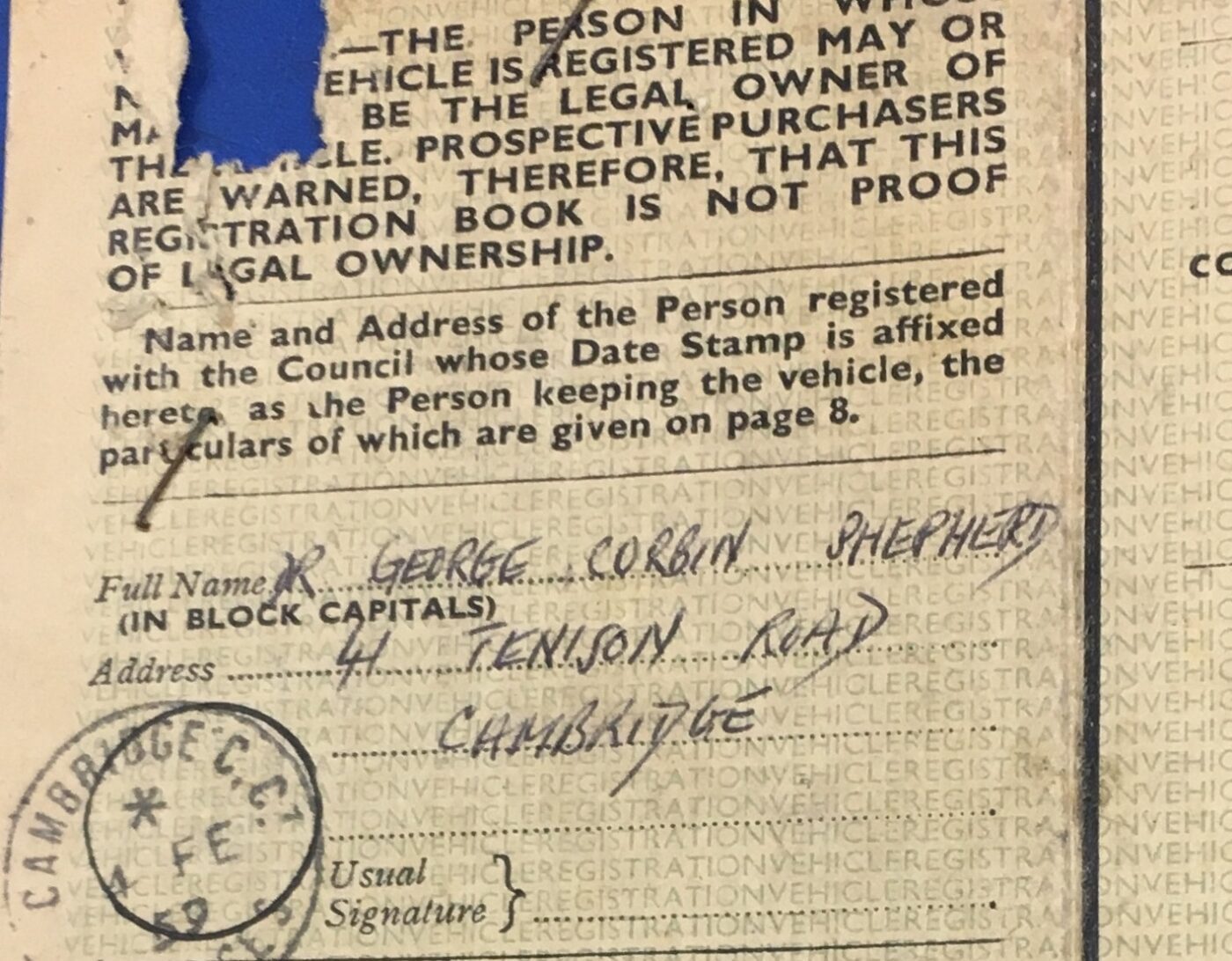
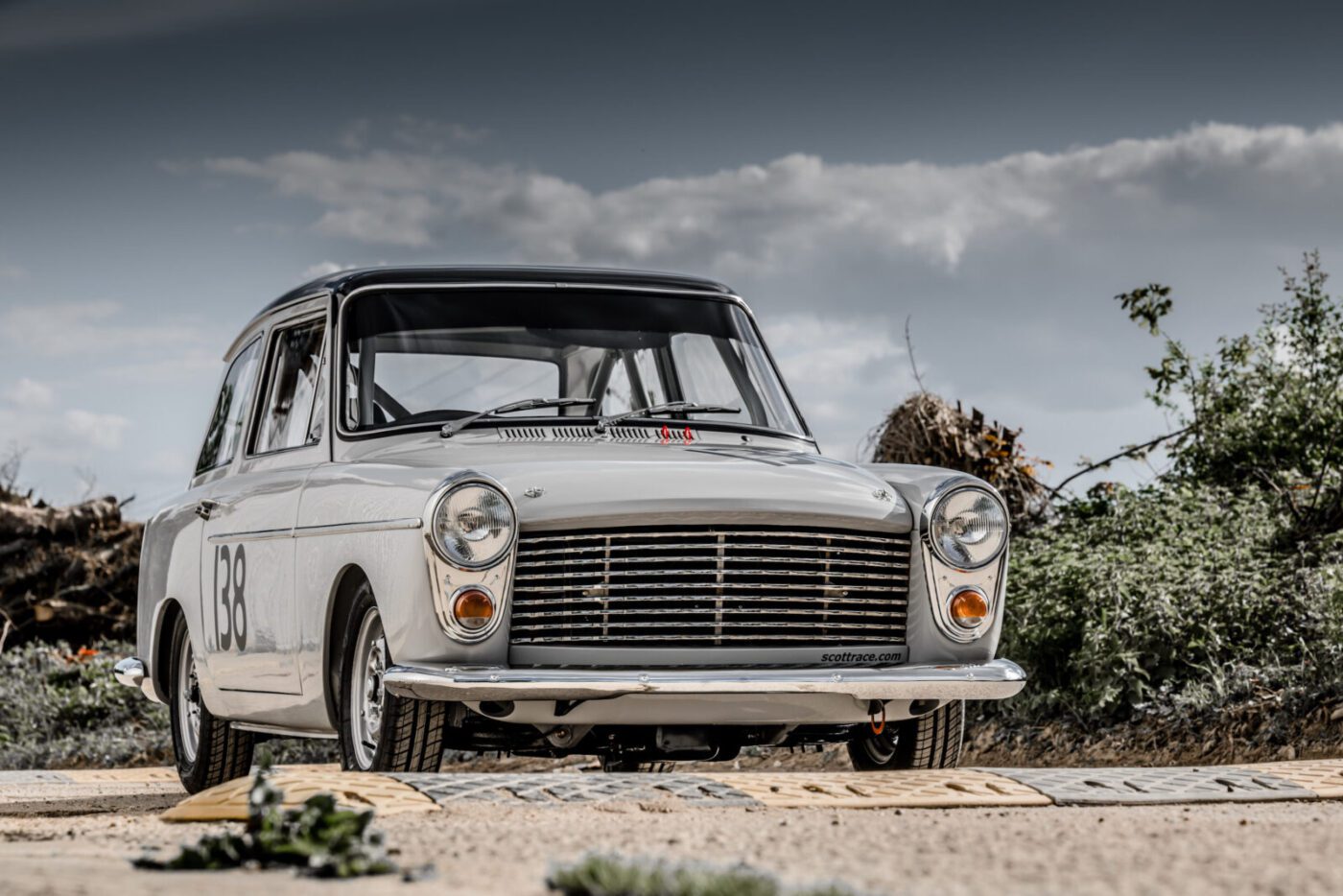
We were car nuts and racing nuts
“They were all my Gods, all these people,” says Trevor. “We were car nuts and racing nuts and, as I was just a young member of the club, I knew them in passing, and eventually worked with John and frequently visited Don for advice and parts.”
So how did this self-confessed racing nut fail to identify the famous car driven to work on a daily basis by a colleague at King and Harper’s Garage?
“I didn’t know it at the time, but the car had been re-registered from UCE 13 in its racing days to 937 ACE,” says Trevor. “When Shepherd sold the car he had retained the registration.
“My colleague John worked in the paint shop at the garage and he’d resprayed it, put an interior in and turned it into a road car, so as far as I knew it was just a red and black A40 with a number I didn’t recognise.
“John left and moved to another garage and the car disappeared from my view, then changed hands a few times and I didn’t see it again until about five years later.”
That was on August 6, 1967, when friend Howard Dyson trundled up Trevor’s driveway in Burwell in his new car: a red and black Austin A40 he had bought that day.
“I was working on my Lotus 11 in my workshop, walked out and said ‘what are you doing driving John’s car?’” says Trevor.
READ MORE ABOUT SOME OF OUR GREATEST CLASSIC CARS WITH

A series of articles on our Cult Classics site.
‘Do you not realise which car this is?’
“He said ‘do you not realise which car this is? It was Shepherd’s car’. He got out the original log book showing the registration and colour changes, and Shepherd’s name as the first owner.”
It took Trevor about six weeks to persuade his friend to sell him the car that was once driven to victory by one of his racing heroes.
“I had to have it,” he says, showing us the now fully-restored car, dwarfed among the other race-cars in the Scott Automotive workshop near Red Lodge in Suffolk, among them a March-Buick 85G, Lola T212 recreation and Chevy Camaro.
“It took me until September 19 to talk him into selling me the car – I can’t remember how much I paid him for it.
“I drove it for three years on the road and it was great fun to drive. It handled so well because of its racing suspension. I was a young tearaway and enjoyed throwing it about on the road.
“The engine that was in it was not the original race engine as far as I know. Some years back now Simon and I were talking to Gerry Marshall at Brands and he claimed he had the engine out of it.
“I bought a race-spec, well-tuned BMC 1,000cc engine out of a single seater to turn it into a fast road car.
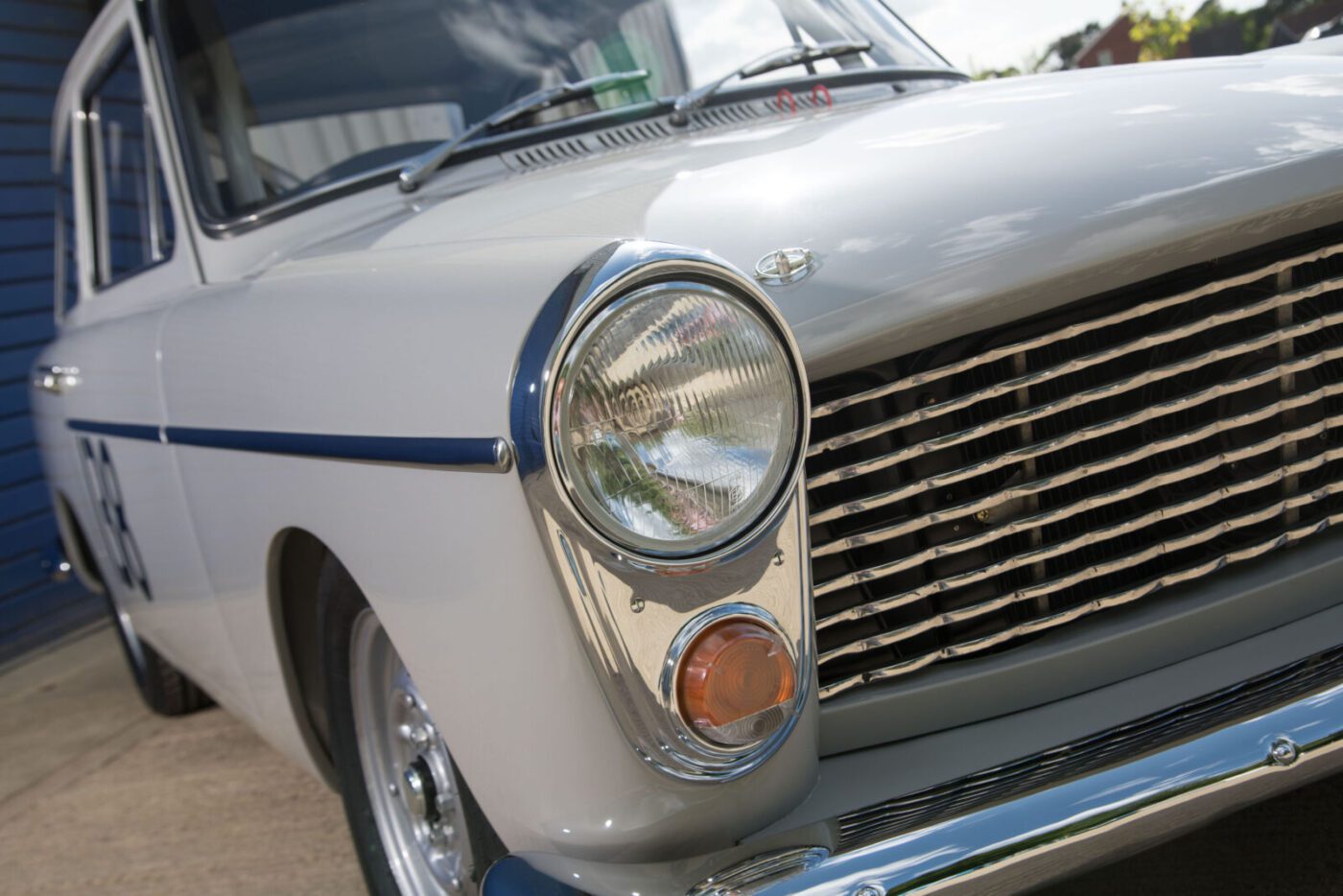
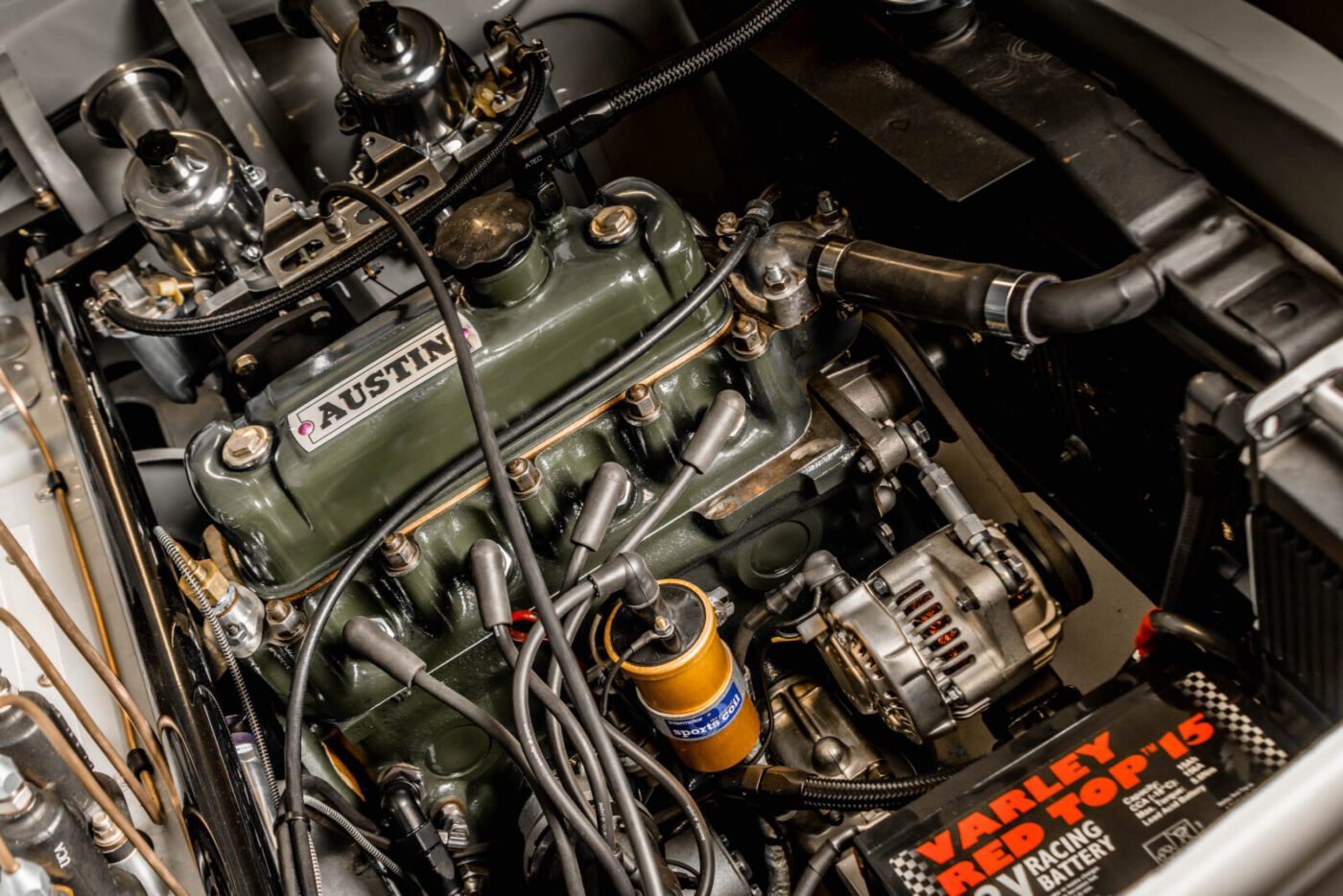
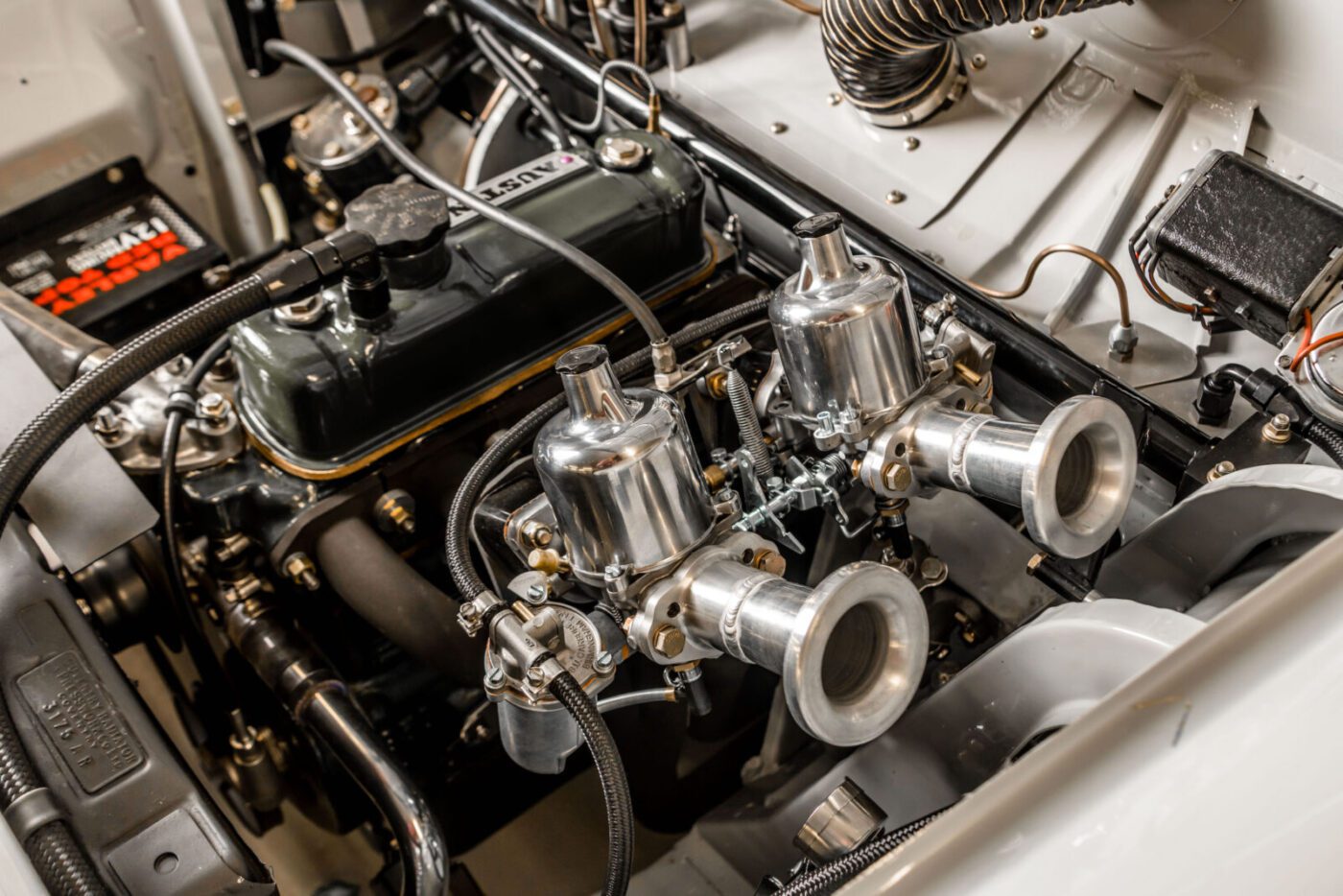
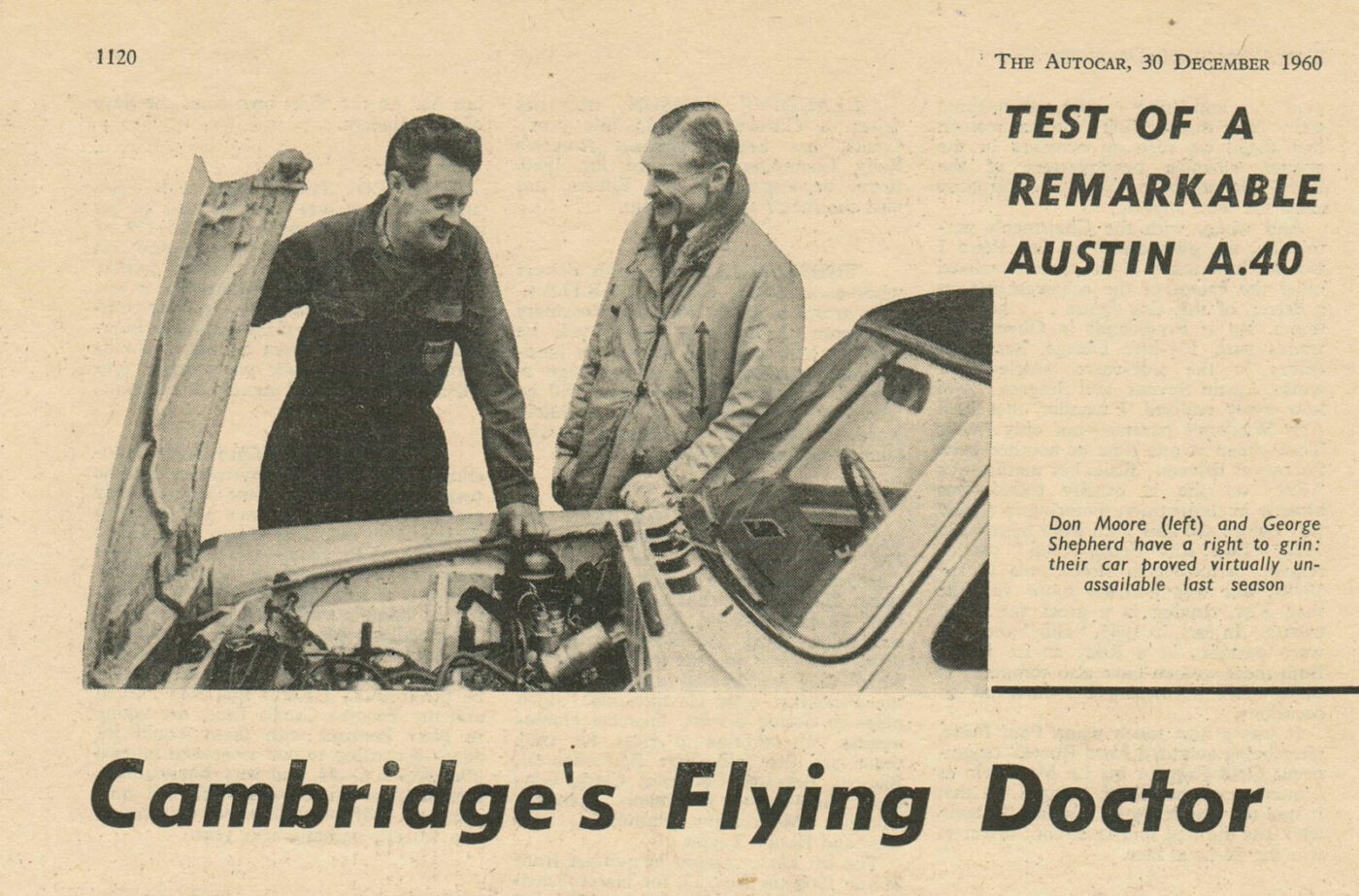
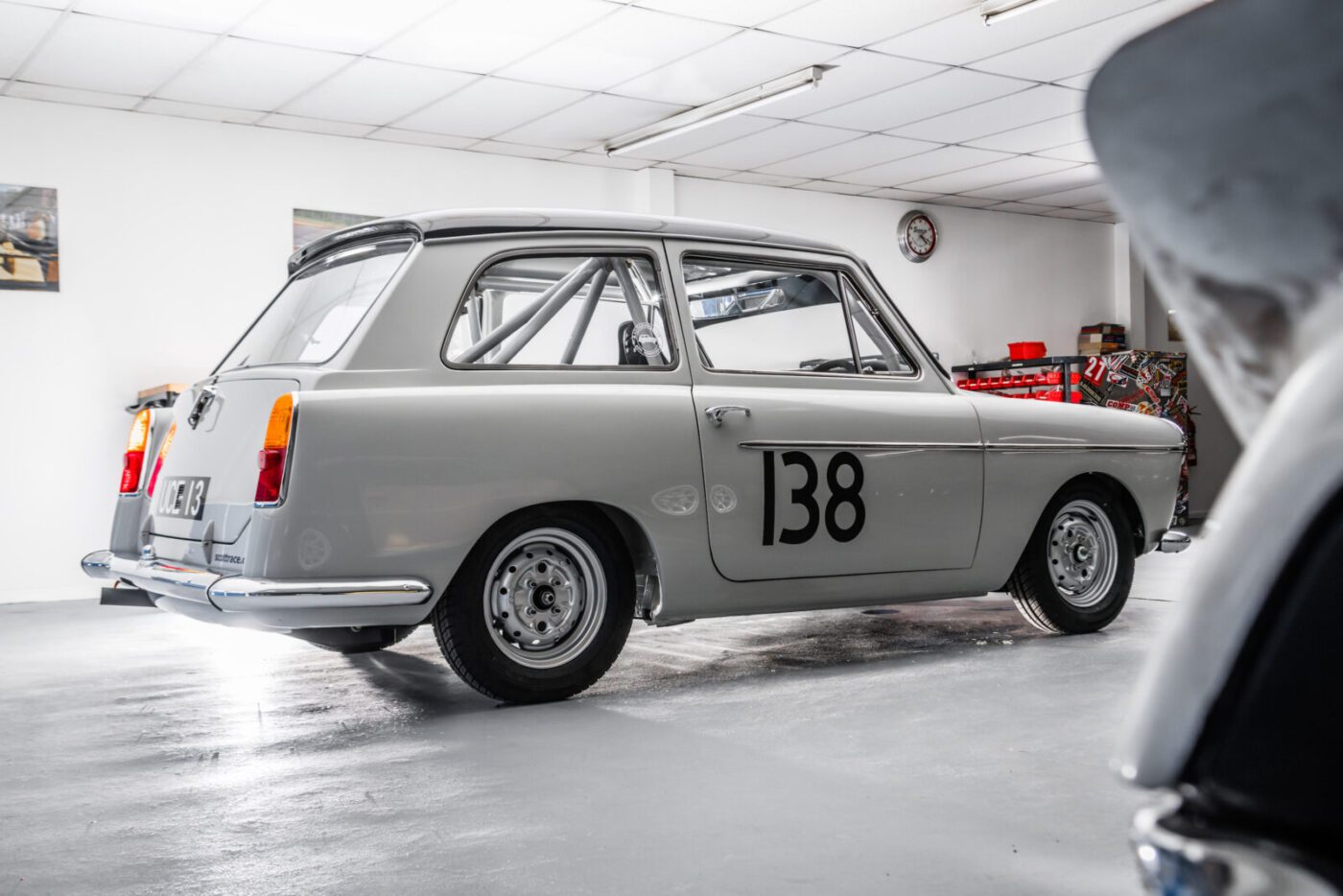
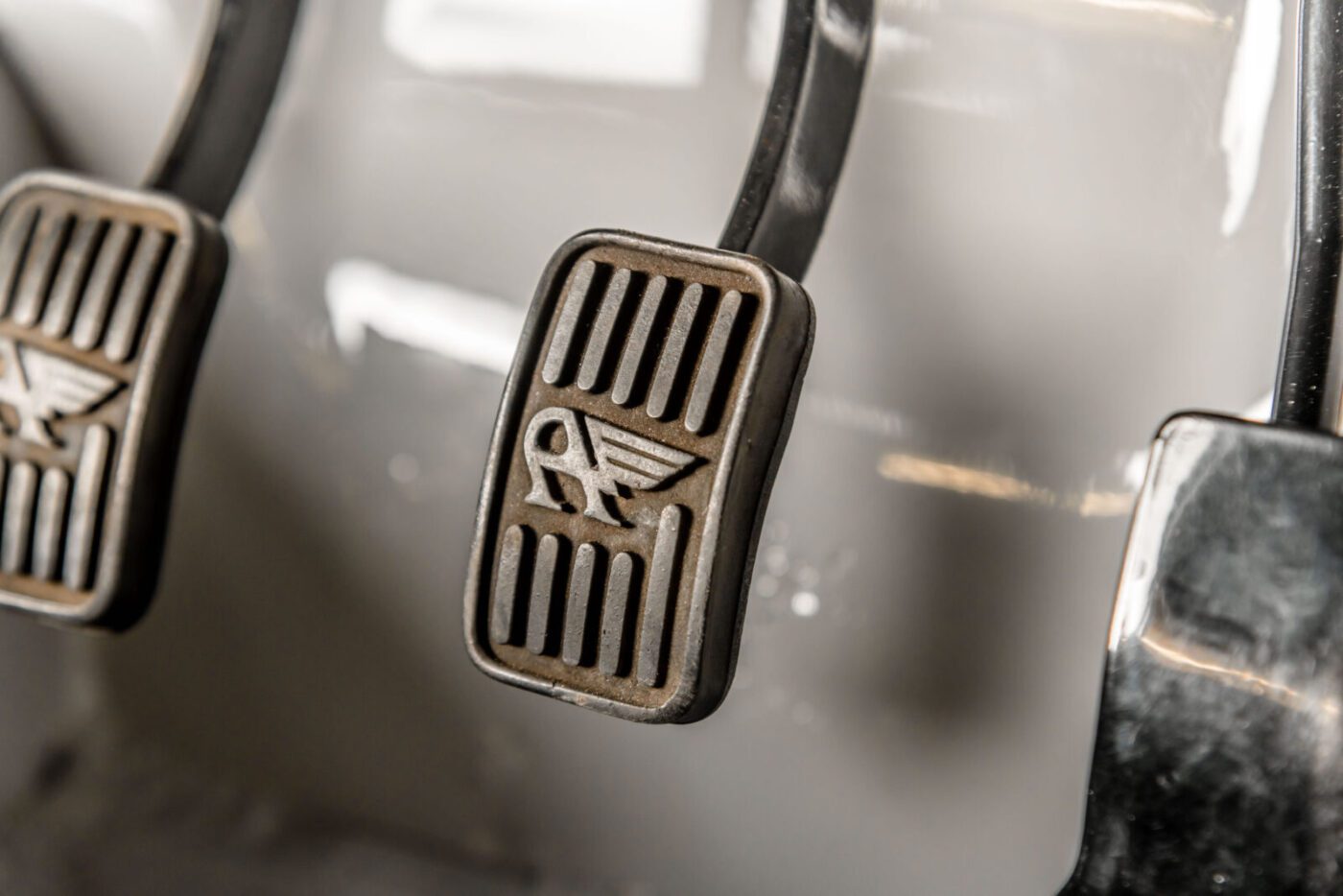
The greatest little car designs ever
“I loved it then and I still do. They were the greatest little car designs ever – Pininfarina transformed the Austin range of cars from the days of the round A35s and A40 Somersets to rectangular, spacious, slippery aerodynamic cars.”
“Tin top” racing was in its infancy when Shepherd finished first in class and second overall in the A40 to Jeff Uren’s Ford Zephyr in the 1959 British Saloon Car Championship, the competition’s second year.
The following year, new Supa Tura “silhouette” regulations allowed for virtually unlimited modifications to cars up to a limit of 1,000cc.
“The only thing it needed was to look like the right shape,” says Trevor.
This gave Moore and engine tuner Harry Weslake a virtually blank canvas – in the outline shape of an A40 Farina – on which to create a championship-winning car.
“Moore systematically lightened the car to the extreme until eventually adding some aerodynamic aids to lower the drag co-efficient, and that’s how it was able to win overall,” says Trevor, with the car running fibreglass boot and bonnet, aluminium doors, plus plastic windows apart from the glass windscreen.
“It could outpace almost anything around the corners. On the really long Silverstone or Snetterton straights the big cars like the Jaguar Mk 2s – which had to carry all their weight and glass – could still overtake him, but round Brands ‘Gentleman Jack’ Sears’ Jaguar was the only big car he never beat, but they posted the equal fastest lap.”
The little 948cc A-series engine was tuned and modified by Weslake to the nth degree, including redesigned cylinder heads, re-engineered ports, and twin SU carburetors, plus Moore-designed inlet and exhaust manifolds, a BMC Formula Junior crankshaft and upgraded suspension and steering.
It all resulted in a stunning transformation from plodding late ‘50s production car to race-honed sprinter.
Weslake and Moore wrung 84bhp at 7,500rpm out of the engine, up from the standard road car’s 34bhp at 4,750rpm, with 0-60mph achieved in just over 11 seconds and a top speed of about 107mph, compared to 35 seconds and 73mph for the model you’d drive away from showrooms.
Shepherd, who would drive the car to and from race meetings outside London, already had the Supa Tura championship in the bag by the time he rolled the Austin in the finale at Brands Hatch.
“He damaged it quite severely, but it was completely rebuilt to race specification for the next season and tested on the road by Autocar magazine in December 1960,” says Trevor. “He intended to race it again in 1961, but they changed the regulations to get rid of Supa Tura and he decided to race a Mini instead.”
81.5% of customers could get a cheaper quote over the phone
Protect your car with tailor-made classic car insurance, including agreed value cover and discounts for limited mileage and owners club discounts

“Fairly breathtaking for a 1,000cc engine”
Driving the rebuilt car, Autocar described the performance as “fairly breathtaking for a 1,000cc engine”.
“On the open road the car is immense fun to drive,” the magazine said. “One could not be blamed for suspecting that a vehicle designed as a small family saloon car would not feel very safe when given this type of performance.
“In fact, suspension and steering modifications have been developed to match engine performance, and the car feels very stable and controllable at all times.
“There was never any inclination for the car to wander about, even at over 100mph. At this speed one always felt in complete control, which is more than can be said of some cars specifically designed for such speed.”
Having made the decision to race Minis, Shepherd displayed the car in Marshalls showroom, along with a board with all the championship details, before selling the car at the end of the year. Eventually it found its way into Trevor’s hands more than 50 years ago.
After driving the Austin for three years Trevor took it off the road, removed and sold the engine and laid the car up in a barn, not to turn a wheel under its own steam until the Spring of 2018.
“I didn’t want to sell it, so I parked it up just to store it,” says Trevor. “There was no historic racing scene as such, so I couldn’t really race it because the newer Minis and Escorts would beat it all day long.
“It was a funny era and these cars weren’t worth much at the time. I remember going past a Moto Baldet garage in Baldock on my way to London and there was a Sunbeam Tiger Le Mans coupe for sale for £400.
“You could buy a GT40 for under £1,000 – nobody wanted them because the only racing you could really do was Formula Libre, a race at the end of a meeting where anything can run from home made specials right up to F1 cars.
“I sold the Lotus for only £500 to put a deposit down on my second house.”
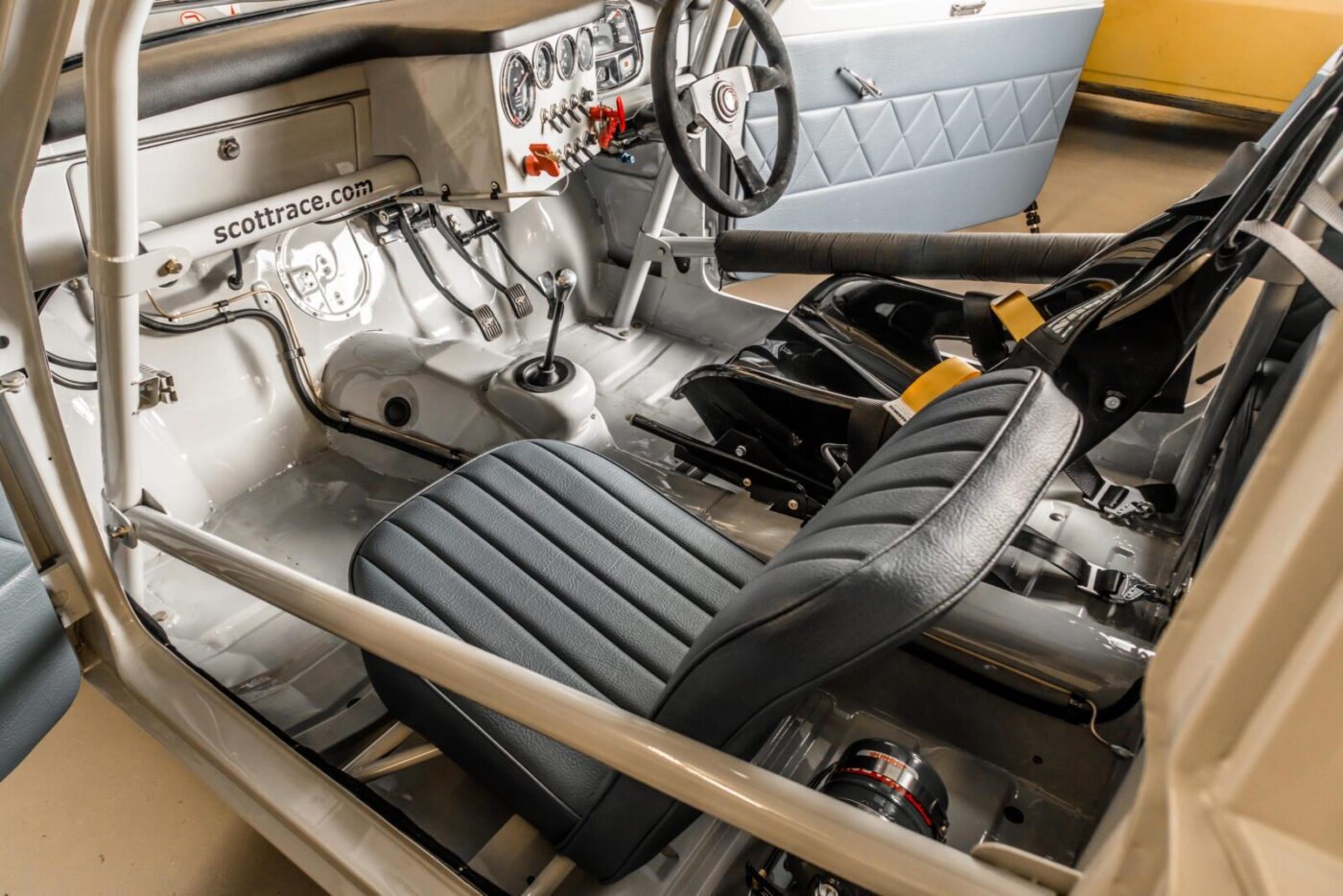
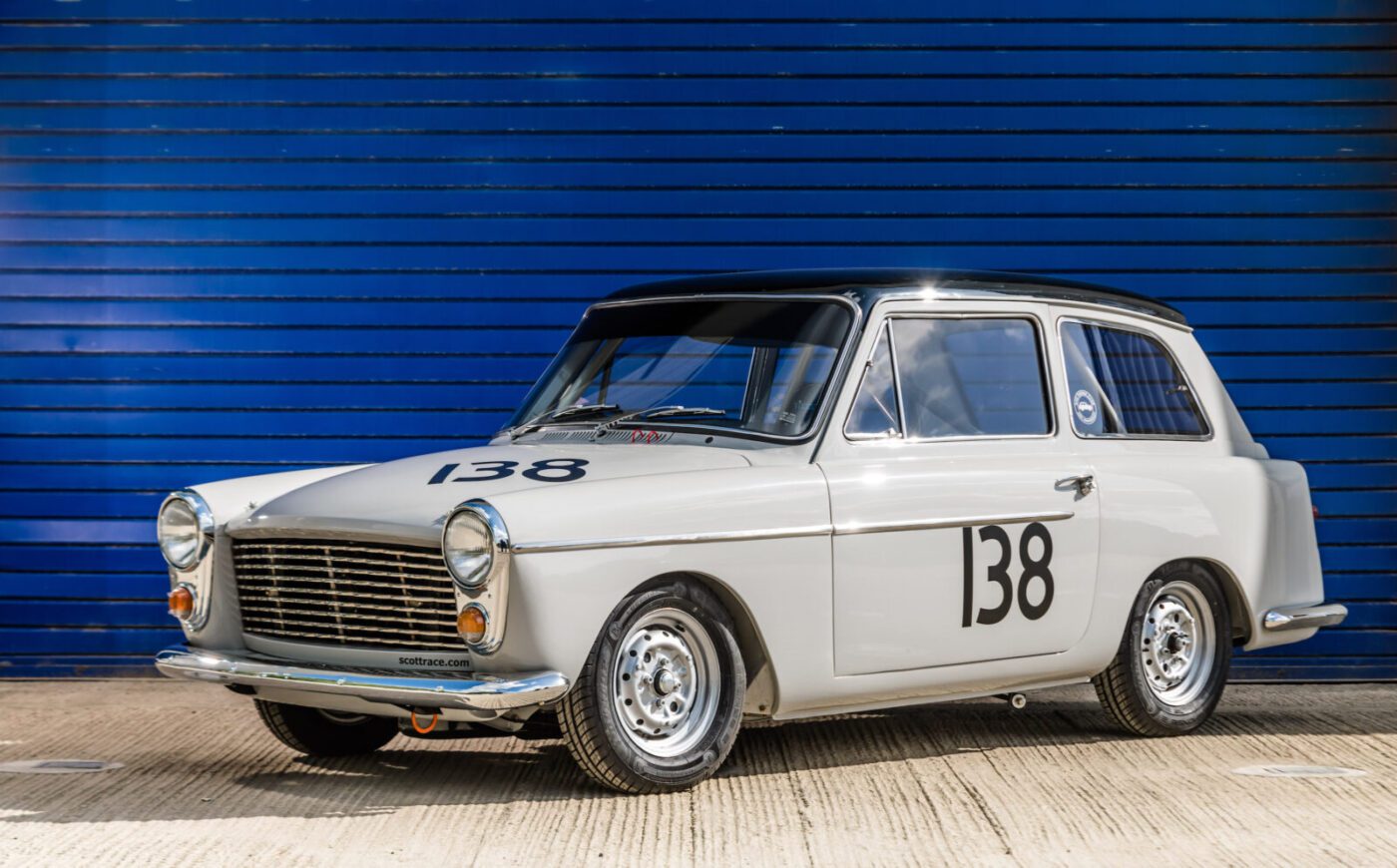
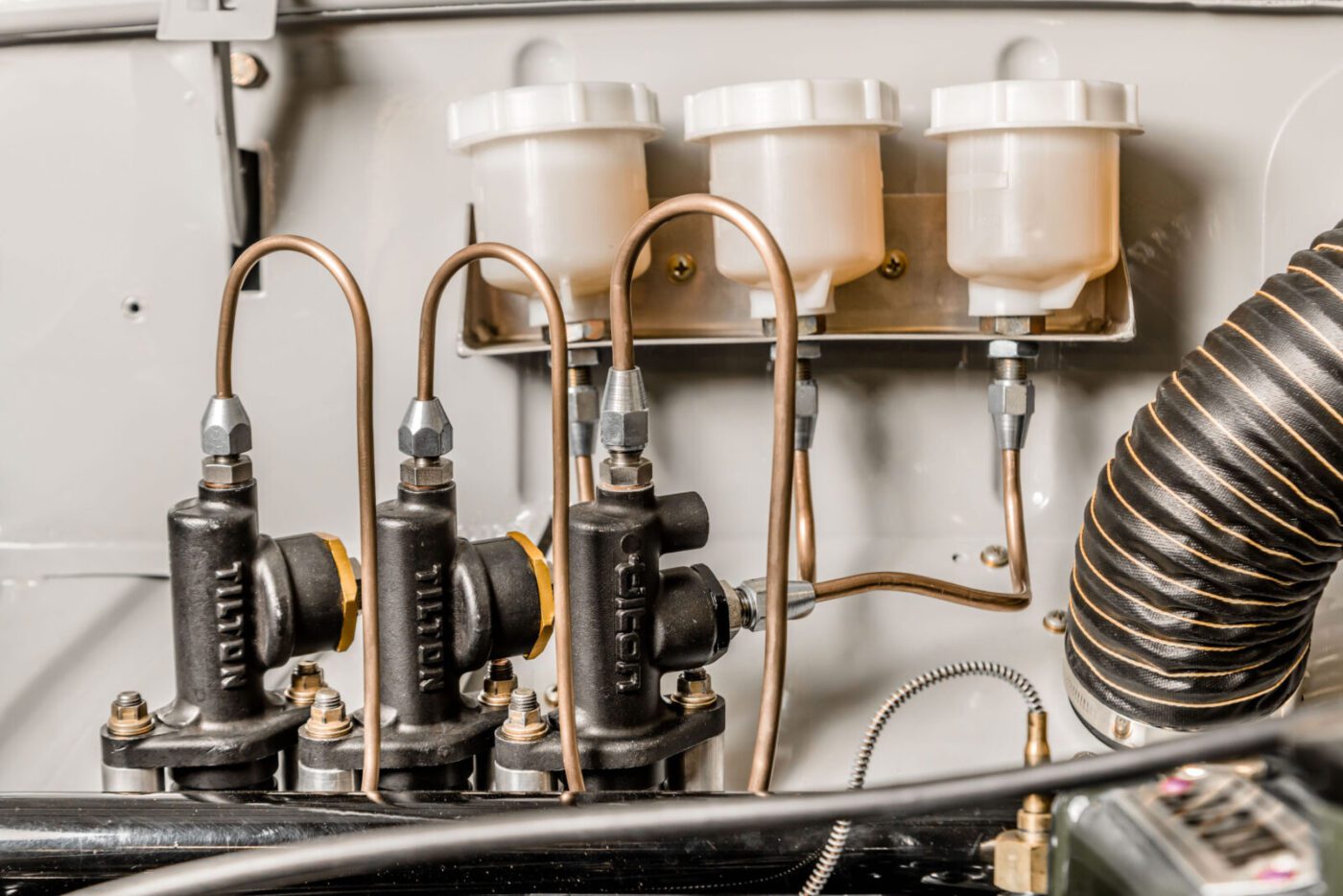
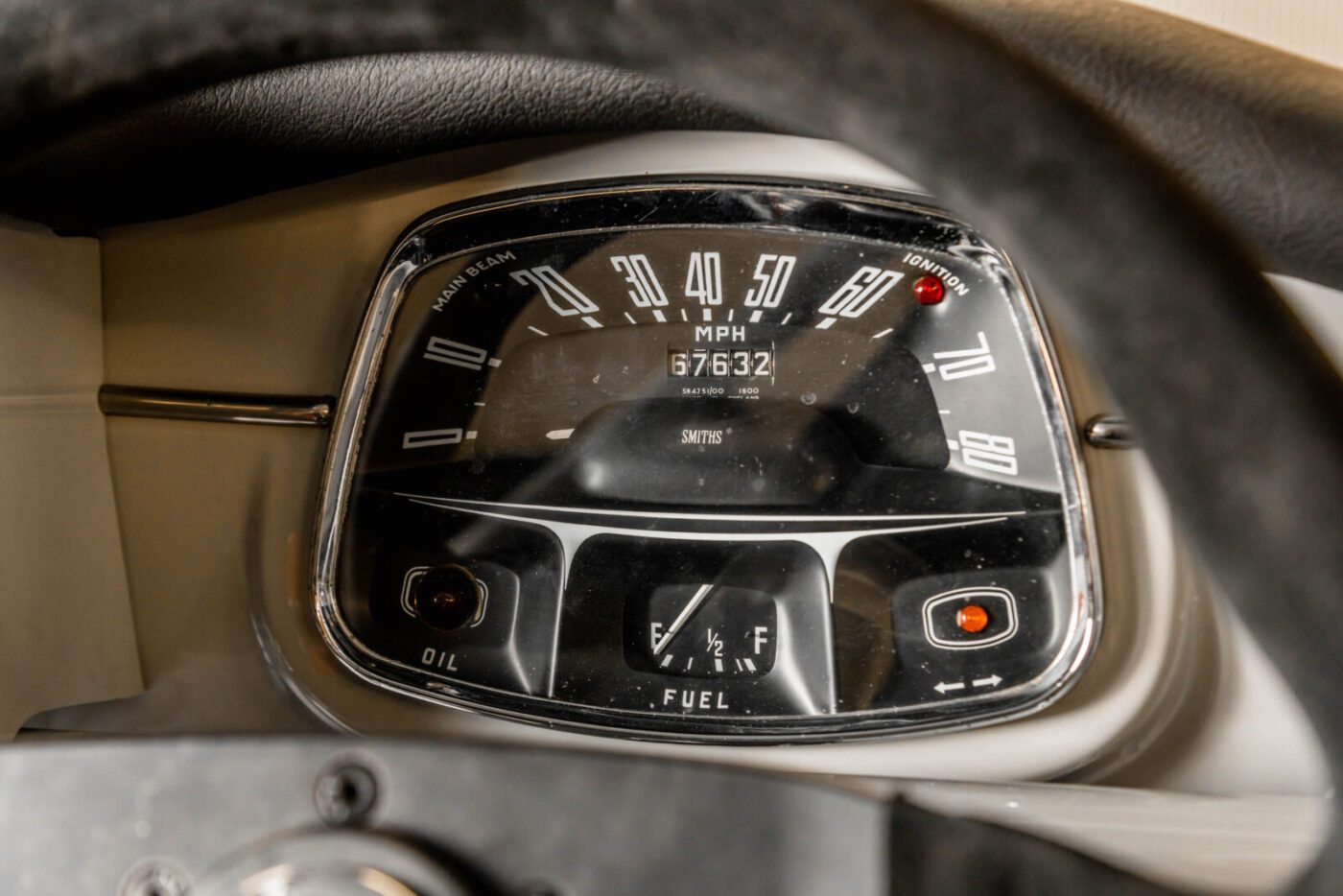
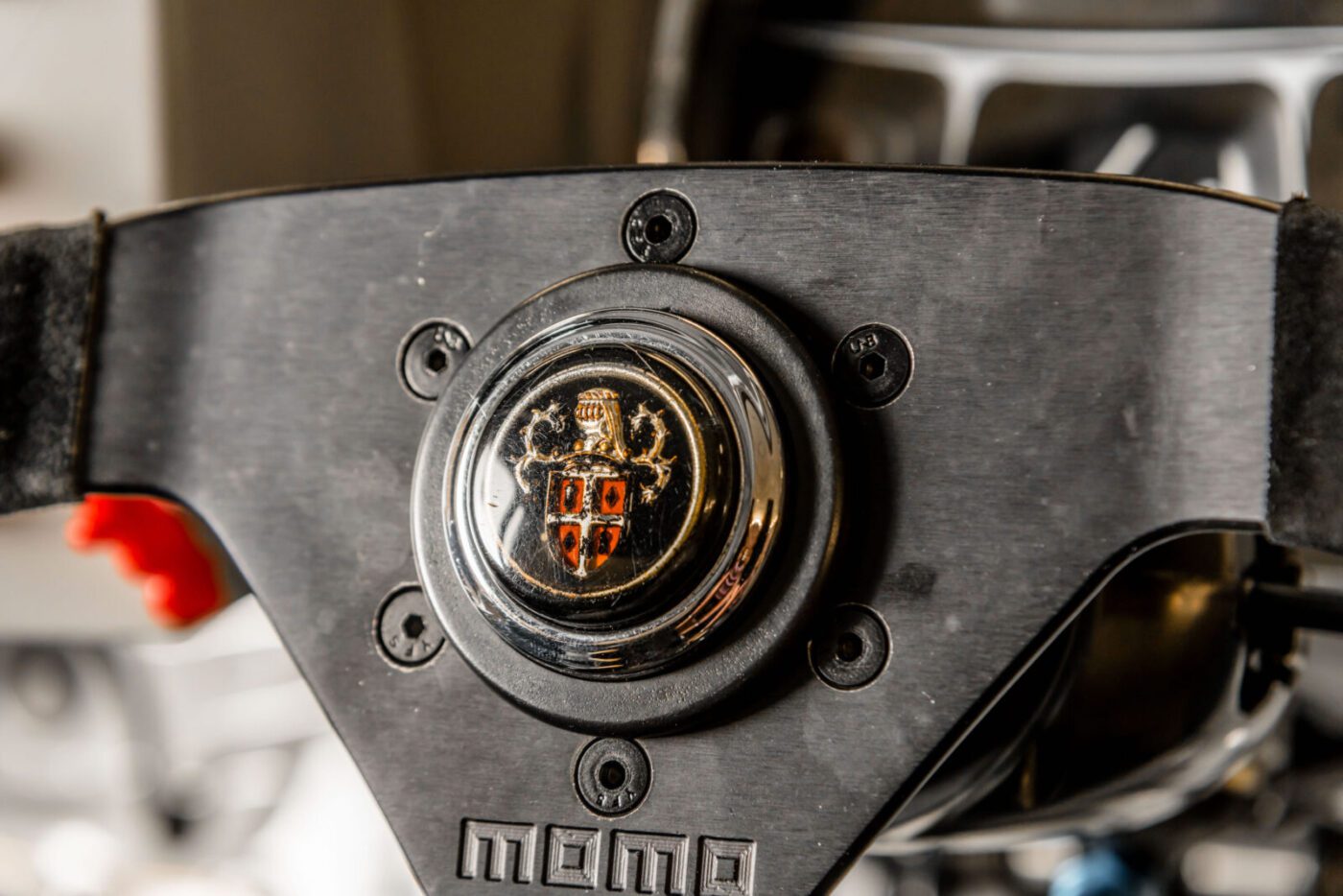
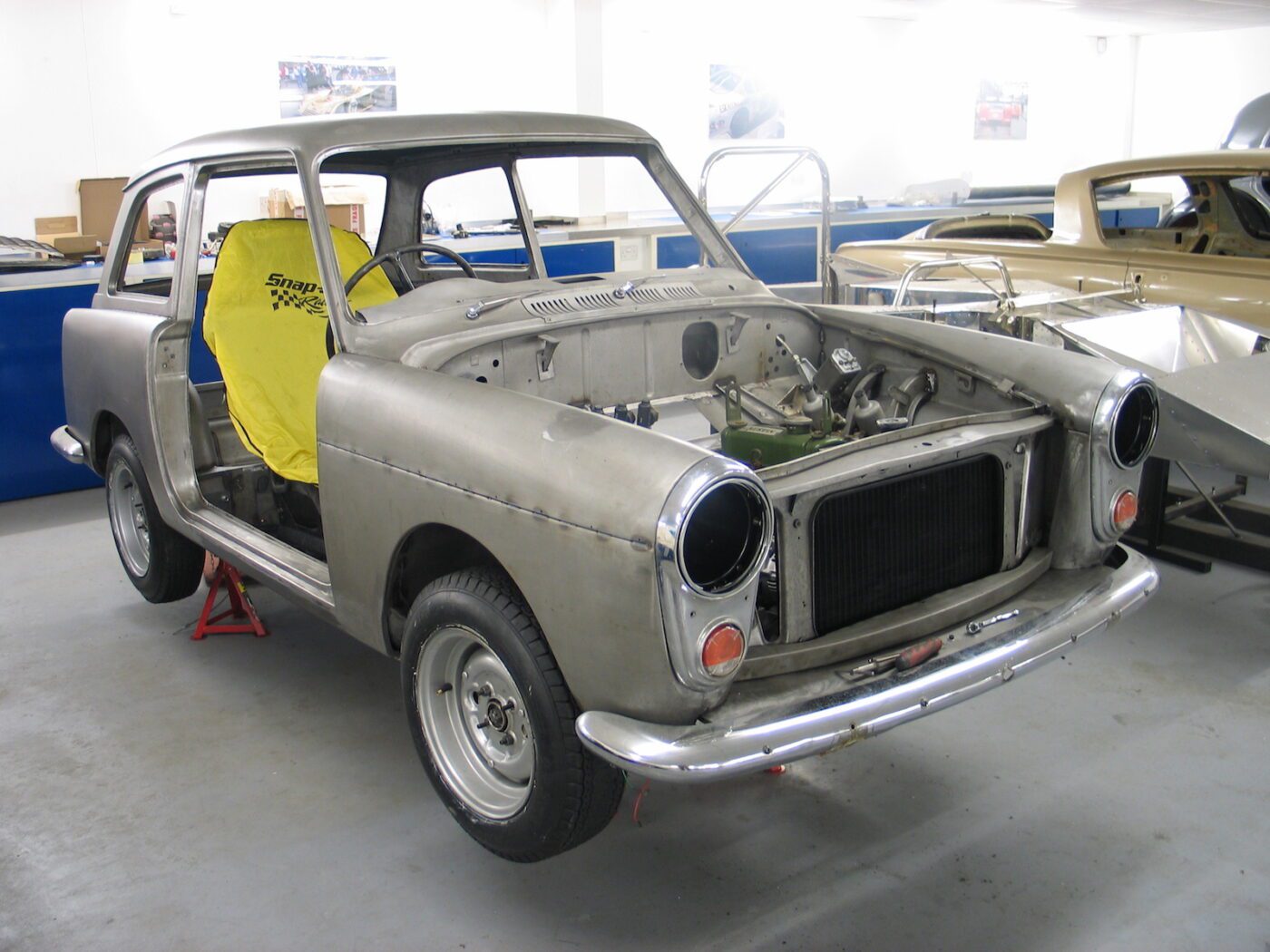
“Dad’s a hoarder”
Simon, who was born in 1972, a couple of years after the car was laid up, says the main reason his dad never sold the car was “because he’s a hoarder – he’s not quite Mr Trebus, but he could be related!”
Trevor began prepping racing cars for other people in the early 1970s as “more of a hobby and a part-time job for friends”.
Meanwhile, Simon completed an apprenticeship as a tool-maker before getting a job with Racing Fabrications under Ian Jones and George Wadsworth, learning the race preparation business.
“Eventually, with so much work offered, I decided to go full-time working on people’s cars and we rented part of Lakenheath Garage,” says Trevor.
“We got more and more work and had to rent a place in Brandon, and then moved to this 10,000 square foot workshop here.
“Having a hobby as your job is one of the best things I can imagine. I technically retired 10 years ago – I’m coming up to 75 years old and still work here seven days a week sometimes, though usually I’ve got it down to five days.”
Simon knew of the car during his childhood, but it never held any fascination for him at the time.
“I had no interest in it as a kid – who the hell was Doc Shepherd?” he says. “As a youngster watching the BTCC it was all about the Sierra Cosworth, that’s what I grew up with. They were the pictures I had on my wall.”
But that all changed when father and son began working on a project to bring the little Austin back to life, a joint labour of love that’s taken 10 long years since the seeds of the idea were sown by Marcus Pye of Autosport.
“Having met Marcus during sorties at various racing circuits, a casual conversation over dinner at one such event saw him become aware of my ownership of Shepherd’s car,” says Trevor.
READ MORE ABOUT SOME OF OUR GREATEST CLASSIC CARS WITH

A series of articles on our Cult Classics site.
Getting the A40 back on the track
“He was a fan of that era, as his father’s first car was an A40, and he suggested getting the A40 back on the track, which set the ball rolling on the restoration.”
This was compounded by a visit to the Silverstone Classic, where a number of A40s were running very competitively.
“This boosted our interest and was another incentive to get the car back on the track,” adds Simon.
Trevor laughs: “10 years and a huge amount of money later…!”
With the business increasingly busy restoring, race prepping and maintaining customers’ car collections, the A40 was worked on when time allowed.
“It was a matter of fitting all the work around everything else we were doing,” says Trevor. “We got it in the workshop and it sat there for a while, we’d perhaps take a bit of interior out, and eventually we took it apart until it was a completely bare shell.
“Next we took it to Walsall to have it acid dipped, and brought it back to see what we had left. It was in quite good condition compared to some we’ve seen. The Austin was then sprayed with duck oil for protection whilst we worked on the repairs, starting with the corroded areas of the car.”
Putting it all back together wasn’t a simple matter, with the car having to meet current historic racing regulations rather than those at the time of its 1960 championship win.
“The body panels were restored back to original condition, but we’ve had to almost build it twice so it can switch between the HRDC and FIA regulations,” says Trevor.
After adding the now-obligatory roll cage, the car was completely built in bare metal before being dismantled and acid dipped again to ensure no rust spots had formed in the workshop.
It was immediately sent for e-coating, an electrically charged base paint treatment, before the completely bare shell was prepared and sprayed to an incredibly high standard in its original Farina grey with a black roof.
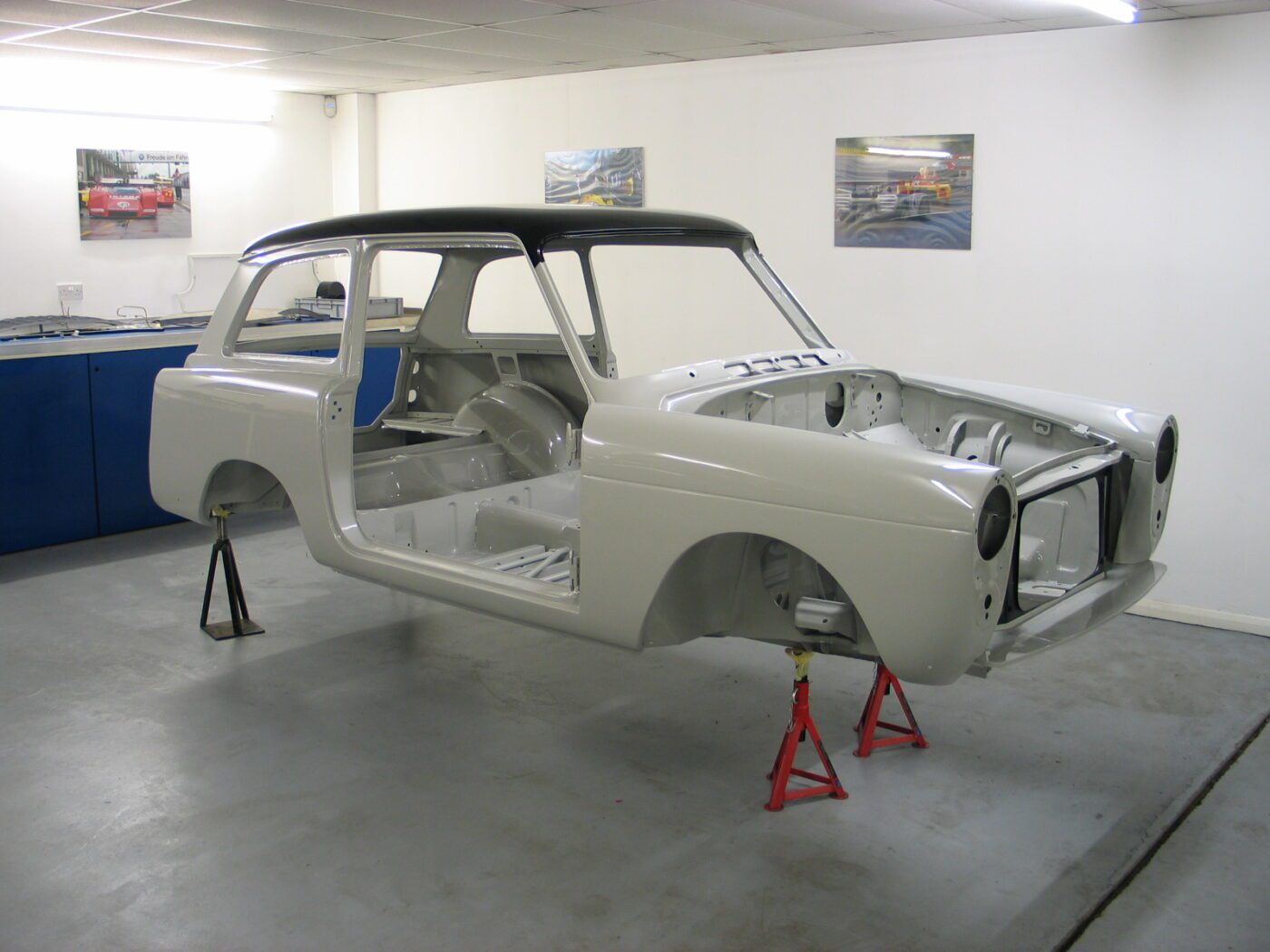
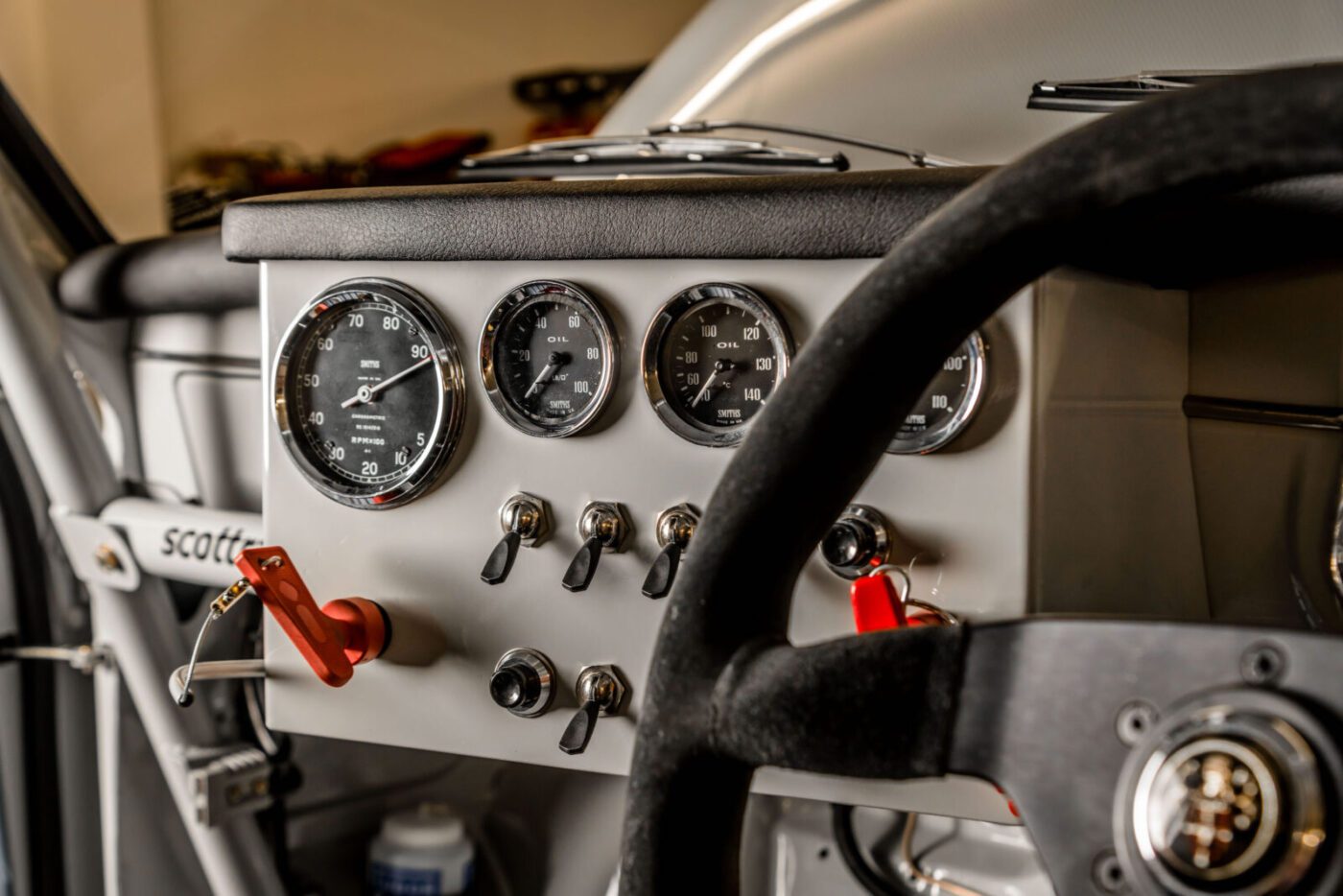
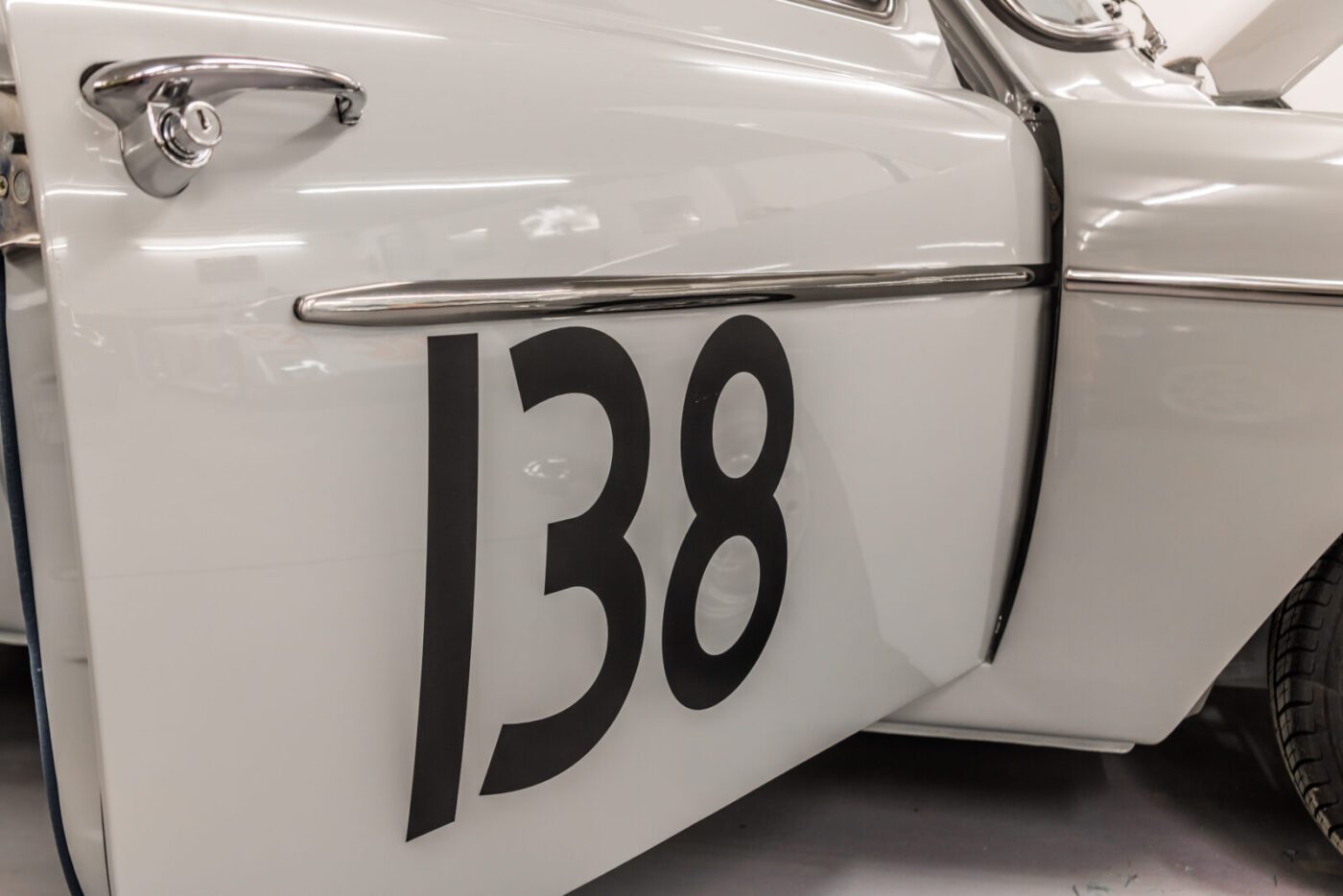
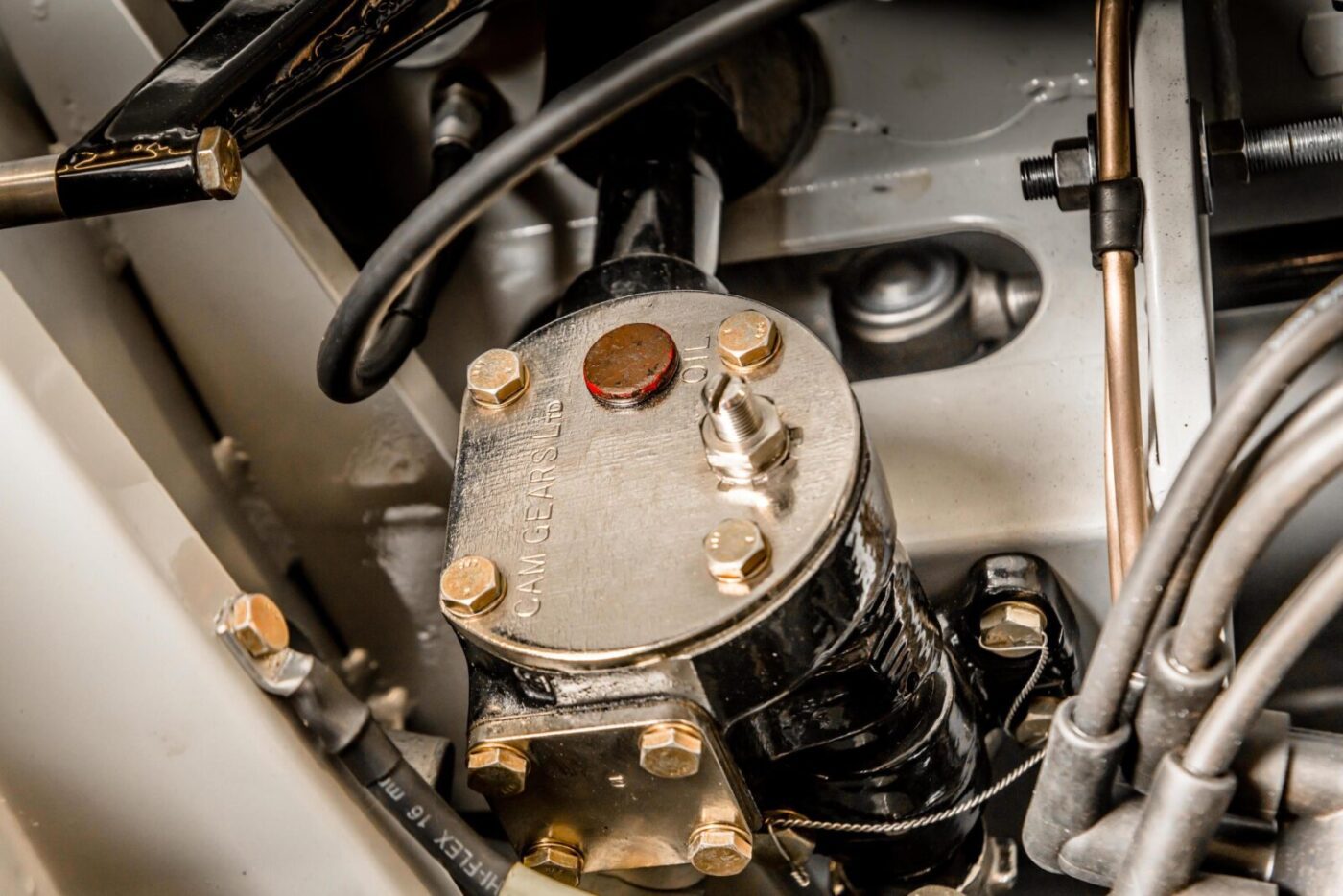
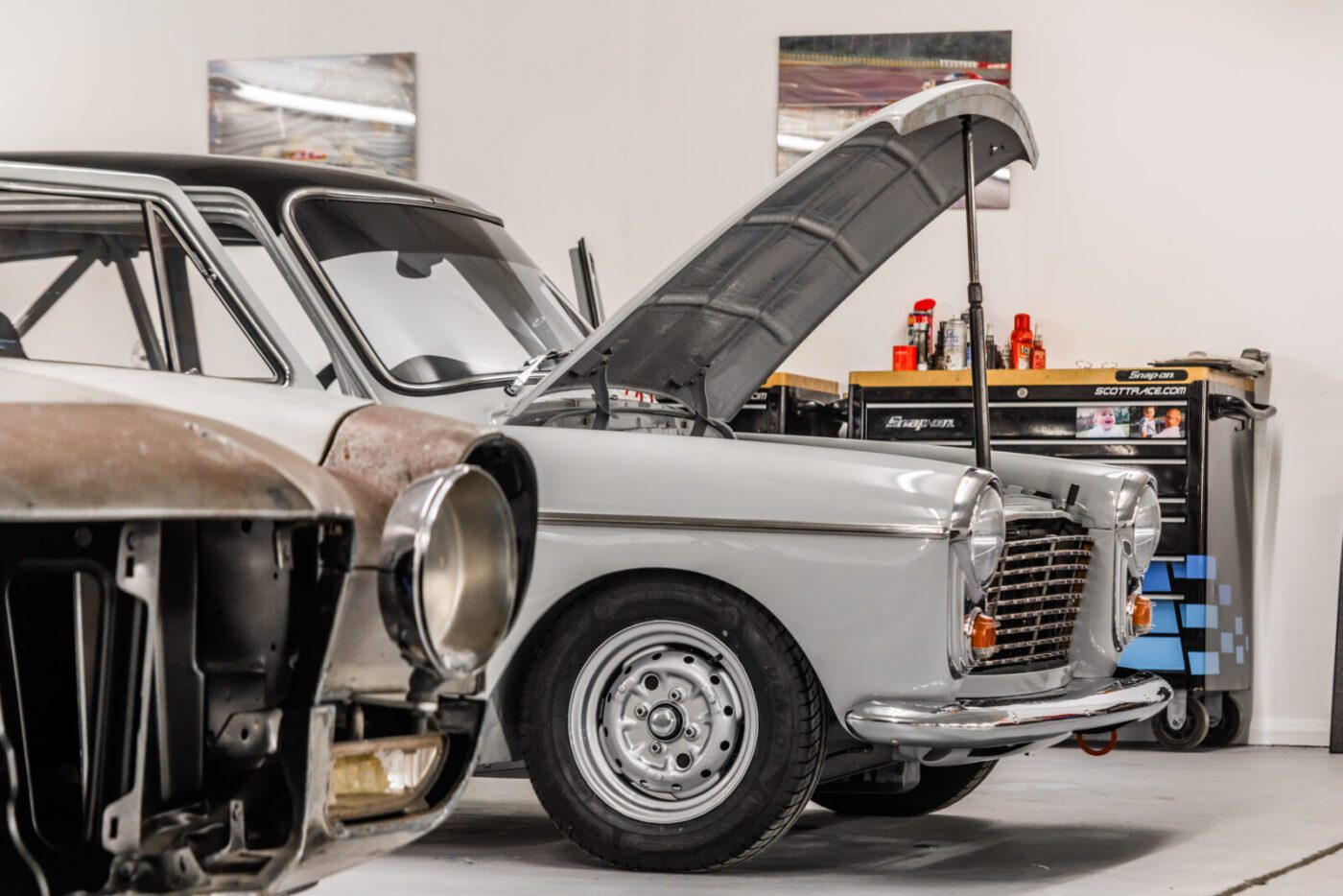
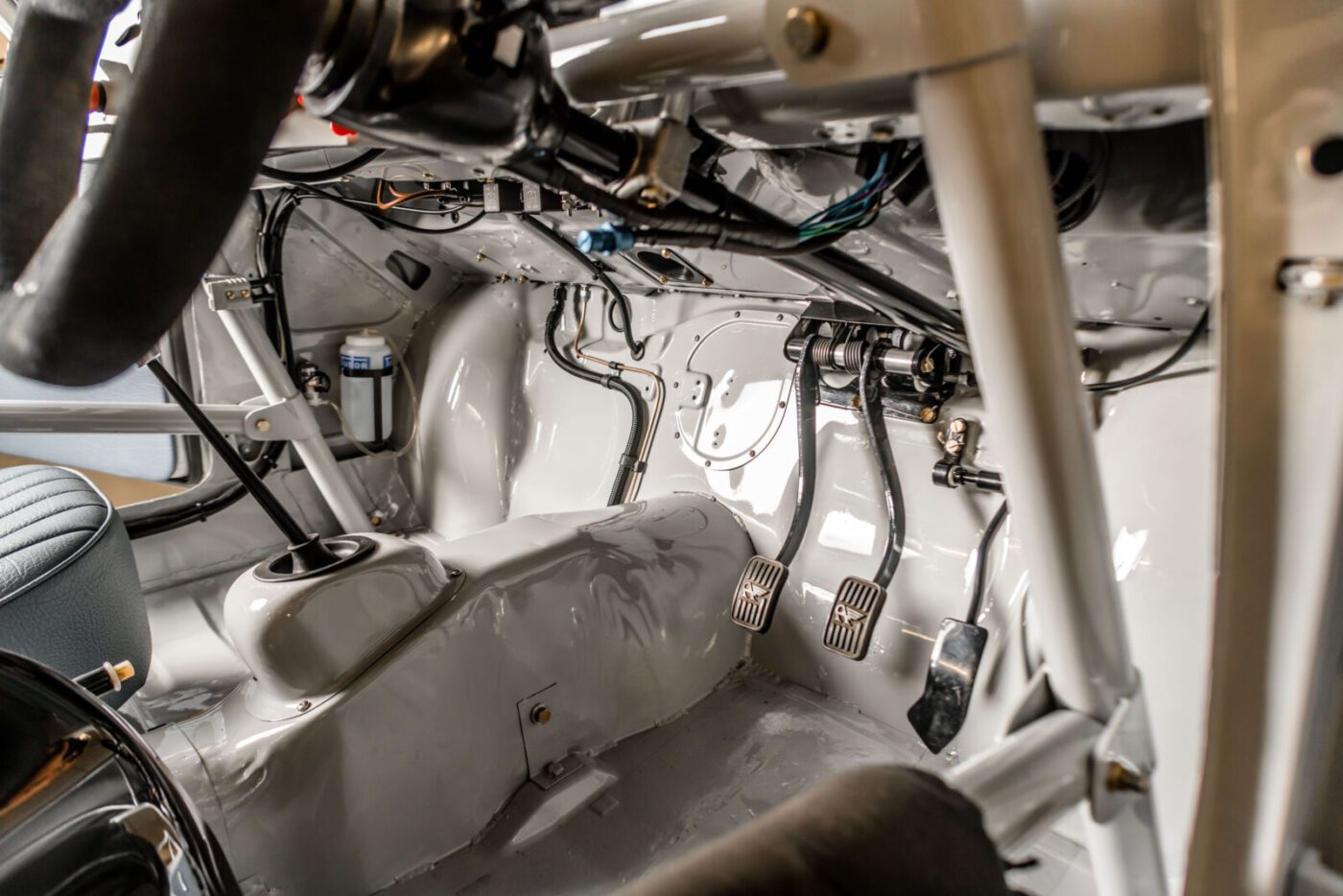
A real top quality job
“It’s a real top quality job, painted by Matt Manderson at 1st Place Finish, who has painted many current and historic Formula One cars and numerous exotic cars for manufacturers who we can’t name,” says Trevor.
Inside, lightweight passenger and rear seats have been added to comply with regulations in some classes, while the original colour vinyl was sourced after a long search from a manufacturer who started to produce the same blue interior as used in Triumph TR7s.
A Tillett racing seat even has matching colour stitching.
“We sent them a sample of the vinyl and asked them to get their own logo stitching in a colour match, instead of their usual yellow and red logo,” says Trevor.
An aluminium, foam-filled fuel tank is another modern safety addition, covered by a bulkhead, while Pilkington was commissioned to create a heated A40 windscreen because, Simon says, “how many times does it rain at Goodwood?”
“They agreed to make them as long as we bought two,” adds Trevor, who shelled out £750 for the screens.
The body-coloured dashboard binnacle, angled towards the driver, is another modern touch, a bespoke design and an example of the team’s engineering and fabrication work.
“It’s almost an advert for what we can create,” says Simon, now as consumed by the car as his father.
“It’s our artistic licence and what we would like to see in a classic. Other people have just put straight gauges and switches in the dashboard, but we wanted something that’s looking at you, the driver, and handy to touch.”
With the car finished, it was used as a template for the Atlas Editions diecast model series celebrating 60 years of the BTCC, before it was prepped for the Silverstone Classic media day on May 2 – its first appearance on a race track since Brands Hatch in 1960.
“It moved about 3ft in the workshop to prove the clutch worked before Silverstone, and then did two laps round there for the track photo shoot with cars from throughout the championship’s history,” says Trevor.
Now it will be tucked away in readiness for the Classic itself from July 20 to 22, where it won’t race but will be on display.
It’s a racing car, not a museum piece
And after that?
“We’ve spent long enough building it, and now it needs to be used,” says Trevor. “It would be a shame for it to get damaged, but it’s a racing car, not a museum piece.
“We’ll hopefully run it at Goodwood, in the HRDC in this country and in European historic saloon car racing.
“Matt Manderson, who did the paintwork, will be driving it, and we’ll ask Rob Huff (former world touring car champion), who has driven our 1969 Camaro, to drive it too.”
One day, the car will pass to Simon, and Trevor hopes it will stay in the family long after that.
“It will never be sold,” says the man who first laid eyes on the car on the racetrack 58 years ago. “It will be Simon’s and then my grandson Edward’s – he’s four and a half at the moment!”
The Silverstone Classic is taking place on July 20-22, where the car will be on display as part of the event’s 60th anniversary celebrations of the British Touring Car Championship. Adrian Flux is proud to be the event’s Official Vehicle Insurance Partner.
